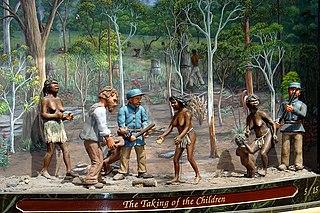 W
WThe sociology of race and ethnic relations is the study of social, political, and economic relations between races and ethnicities at all levels of society. This area encompasses the study of systemic racism, like residential segregation and other complex social processes between different racial and ethnic groups.
 W
WCasta is a term which means "lineage" in Spanish and Portuguese and has historically been used as a racial and social identifier. It has been interpreted by certain historians during the 20th century to describe mixed-race individuals in Spanish America, resulting from unions of Spaniards, Amerindians, and Africans. Basic mixed-race categories that appeared in official colonial documentation were mestizo, generally offspring of a Spaniard and an indigenous person; and mulato, offspring of a Spaniard and a black African. There were a plethora of terms for mixed-race persons of indigenous and African ancestry used in 18th-century casta paintings yet they are not known to have been widely used officially or unofficially in the Spanish Empire.
 W
WCreole people are ethnic groups which originated during the colonial era from racial mixing mainly between West Africans as well as some other people born in the colonies, such as African American, French, Spanish, and Native American peoples; this process is known as creolization. Creole peoples vary widely in ethnic background and mixture and many have since developed distinct ethnic identities. The development of creole languages is sometimes mistakenly attributed to the emergence of creole ethnic identities; however, they are independent developments.
 W
WHalf-caste is a term for a category of people of mixed race or ethnicity. It is derived from the term caste, which comes from the Latin castus, meaning pure, and the derivative Portuguese and Spanish casta, meaning race. Terms such as half-caste, caste, quarter-caste and mix-breed were widely used by ethnographers throughout the British Empire to try to classify "the natives", and in Australia used during the pursuit of a policy of assimilation. In Latin America, the equivalent term for half-castes was Cholo and Zambo.
 W
WThe Kalergi Plan, or sometimes called the Coudenhove-Kalergi Conspiracy, is a far-right, anti-semitic, white nationalist conspiracy theory, which states that a plot to mix white Europeans with other races via immigration was constructed by Austrian-Japanese politician Richard von Coudenhove-Kalergi and promoted in aristocratic European social circles. The conspiracy theory is most often associated with European groups and parties, but it has also spread to North American politics.
 W
WLobo, is a racial category in the Spanish colonial racial label for a mixed-race casta, far down the racial hierarchy created by the Spanish colonial regime privileging European whites.
 W
WThe Métis are Indigenous peoples in Canada and parts of the United States who are unique in being of mixed Indigenous and European ancestry. In Canada, they are considered a distinct culture, and are one of three groups of Canadian Indigenous peoples referenced in the Constitution.
 W
WThe Métis are Indigenous peoples in Canada and parts of the United States who are unique in being of mixed Indigenous and European ancestry. In Canada, they are considered a distinct culture, and are one of three groups of Canadian Indigenous peoples referenced in the Constitution.
 W
WIn the slave societies of the Americas, a quadroon or quarteron was a person with one quarter African and three quarters European ancestry.
 W
WErich Bernhard Theodor Schultz-Ewerth was a German jurist, ethnologist and colonial administrator, who served as the last governor of German Samoa.
 W
WThe Stolen Generations were the children of Australian Aboriginal and Torres Strait Islander descent who were removed from their families by the Australian federal and state government agencies and church missions, under acts of their respective parliaments. The removals of those referred to as "half-caste" children were conducted in the period between approximately 1905 and 1967, although in some places mixed-race children were still being taken into the 1970s.
 W
WTorna atrás or Tornatrás is a term once used in 18th century Casta Paintings to portray a mixed-race person (mestizo) who showed phenotypic characteristics of only one of the "original races", that is, white, black, Amerindian, or Asian. The term was also used to describe an individual whose parentage was half white and half "albino".